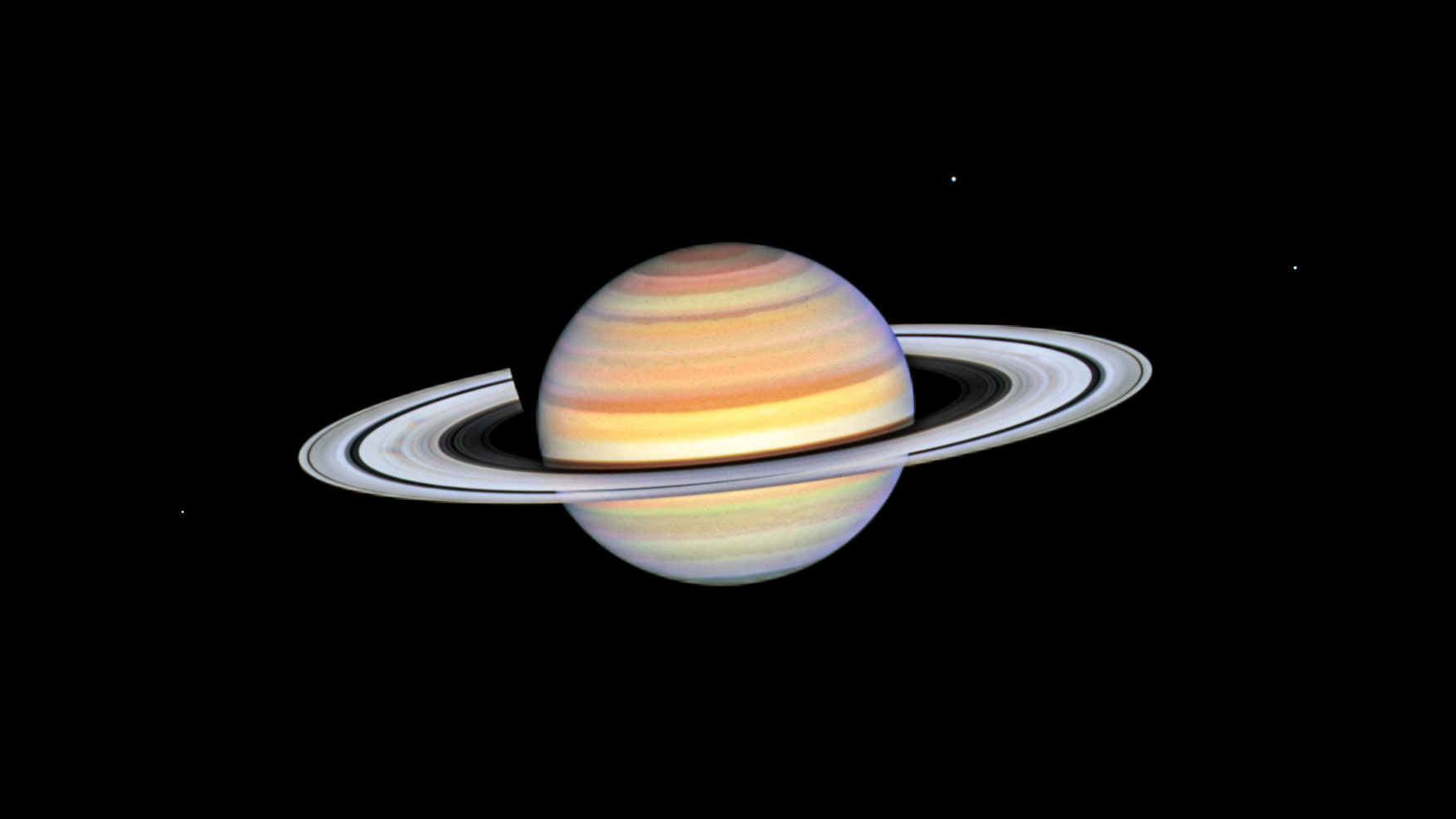4 min read
NOTE: If you're looking for the announcement from Oct. 6, 2009 of the largest ring ever seen around Saturn, you can find that story here: http://www.jpl.nasa.gov/news/news.cfm?release=2009-150
Scientists Discover New Ring and Other Features at Saturn
September 19, 2006
(Source: Jet Propulsion Laboratory / Space Science Institute)
 |
The new ring is a tenuous feature, and coincides with the orbits of Saturn's moons Janus and Epimetheus |
Saturn sports a new ring in an image taken by NASA's Cassini spacecraft on Sunday, Sept. 17, during a one-of-a-kind observation.
Other spectacular sights captured by Cassini's cameras include wispy fingers of icy material stretching out tens of thousands of kilometers from the active moon, Enceladus, and a cameo color appearance by planet Earth.
The images were obtained during the longest solar occultation of Cassini's four-year mission. During a solar occultation, the sun passes directly behind Saturn, and Cassini lies in the shadow of Saturn while the rings are brilliantly backlit. Usually, an occultation lasts only about an hour, but this time it was a 12-hour marathon.
Sunday's occultation allowed Cassini to map the presence of microscopic particles that are not normally visible across the ring system. As a result, Cassini saw the entire inner Saturnian system in a new light.
 |
Wispy fingers of bright, icy material reach tens of thousands of kilometers outward from Saturn's moon Enceladus into the E ring |
The new ring is a tenuous feature, visible outside the brighter main rings of Saturn and inside the G and E rings, and coincides with the orbits of Saturn's moons Janus and Epimetheus. Scientists expected that meteoroid impacts on Janus and Epimetheus might kick particles off the moons' surfaces and inject them into Saturn orbit, but they were surprised that a well-defined ring structure exists at this location.
Saturn's extensive, diffuse E ring, the outermost ring, had previously been imaged one small section at a time. The 12-hour marathon enabled scientists to see the entire structure in one view. The moon Enceladus is seen sweeping through the E ring, extending wispy, fingerlike projections into the ring. These very likely consist of tiny ice particles being ejected from Enceladus' south polar geysers, and entering the E-ring.
"Both the new ring and the unexpected structures in the E ring should provide us with important insights into how moons can both release small particles and sculpt their local environments," said Matt Hedman, a research associate working with team member Joseph Burns, an expert in diffuse rings, at Cornell University in Ithaca, N.Y.
 |
Earth from nearly 1.5 billion kilometers (930 million miles) away |
In the latest observations, scientists once again see the bright ghost-like spokes -- transient, dusty, radial structures -- streaking across the middle of Saturn's main rings.
Capping off the new batch of observations, Cassini cast its powerful eyes in our direction and captured Earth, a pale blue orb, and a faint suggestion of our moon. Not since NASA's Voyager 1 spacecraft saw Earth as a pale blue dot from beyond the orbit of Neptune has Earth been imaged in color from the outer solar system.
"Nothing has greater power to alter our perspective of ourselves and our place in the cosmos than these images of Earth we collect from faraway places like Saturn," said Carolyn Porco, Cassini imaging team leader at the Space Science Institute, Boulder, Colo. Porco was one of the Voyager imaging scientists involved in taking the Voyager 'Pale Blue Dot' image. "In the end, the ever-widening view of our own little planet against the immensity of space is perhaps the greatest legacy of all our interplanetary travels."
 |
Earth is captured here in a natural color portrait made possible by the passing of Saturn directly in front of the sun from Cassini's point of view |
In the coming weeks, several science teams will analyze data collected by Cassini's other instruments during this rare occultation event. The data will help scientists better understand the relationship between the rings and moons, and will give mission planners a clearer picture of ring hazards to avoid during future ring crossings.
Images of the new ring, the E-ring, Enceladus and Earth are available at: http://www.nasa.gov/cassini , http://saturn.jpl.nasa.gov and http://ciclops.org .
The Cassini-Huygens mission is a cooperative project of NASA, the European Space Agency and the Italian Space Agency. The Jet Propulsion Laboratory, a division of the California Institute of Technology in Pasadena, manages the Cassini-Huygens mission for NASA's Science Mission Directorate, Washington. The Cassini orbiter and its two onboard cameras were designed, developed and assembled at JPL. The imaging team is based at the Space Science Institute, Boulder, Colo.
Contacts:
Carolina Martinez 818-354-9382
Jet Propulsion Laboratory, Pasadena, Calif.
Preston Dyches 720-974-5859
Cassini Imaging Central Laboratory for Operations
Space Science Institute, Boulder, Colo.
NEWS RELEASE: 2006-110







